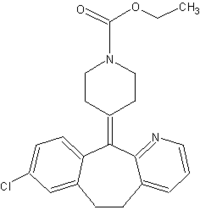It's not every year that a pharmaceutical blockbuster switches to over-the-counter status. Last year there were two: Claritin and Prilosec--both leading prescription, drugs in their respective classes at one time, combining for total sales of $7.3 billion in 2001 (the last full year both were sold by prescription only).
Claritin and Prilosec quickly have seized the top spots in their respective OTC classes. Schering-Plough's Claritin, which launched in December 2002, pulled in $163.3 million across food, drug and mass outlets (excluding Wal-Mart) for the 52 weeks ended Nov. 2, according to Information Resources Inc. Drug captured the majority of that trial with 53 percent of the dollars in that period.
Procter & Gamble's Prilosec OTC, which launched Sept. 15, generated $35.3 million for the seven weeks leading up to Nov. 2. Again, drug stores staked out the majority, claiming 56 percent of all initial sales.
P&G projected first year sales of Prilosec OTC to fall between $200 million and $400 million.
"More than half of Prilosec [sales] is in drug," said Bob Doyle, executive vice president for IRI's Healthcare Solutions Group. "Drug fills more than 50 percent of prescriptions, so the [business] was already in their stores," he continued, noting that drug store operators made a solid effort to keep that business in-house.
Switches face pressure
Although Claritin faced branded competition from Wyeth's Alavert ($54 million in mass retail first-year sales) after two weeks on the market, Schering-Plough enjoyed three months of sales without a private label competitor .
That changed when private label powerhouses Perrigo and Leiner joined the loratadine race in July, driving the retail price down to 33 cents per pill OTC Claritin retails between $1.20 and 60 cents per pill.
Although Prilosec has enjoyed a high trial rate as an OTC through a highly visible initial launch, the brand may not be able to sustain those sales.
Once it loses prominent endcap placements and the media frenzy dies down, Prilosec's inability to deliver instant heartburn relief may split its market between experienced users and first-time users with dashed expectations. The prescription proton-pump inhibitor market is still growing, according to some industry experts, suggesting that part of Prilosec OTC's initial sales are coming from self-treating heartburn sufferers not familiar with PPI therapy.
While much of the growth is likely to slow, what remains is a substantial business. P&G isn't offering a heartburn remedy for all sufferers, nor is it trying to. Rather, it is targeting heavy users in the category, which number some 54 million consumers, according to P&G figures. "Historically, frequent heartburn sufferers have commonly taken a number of treatments--a cocktail approach--in addressing their heartburn problems," noted Blayne Smith, a P&G spokesman.
Of course, none of this should suggest that there isn't opportunity to grow the business for either of these OTC brands. Indeed, Schering-Plough already has a line extension planned for next month with the introduction of Claritin Hives Relief tablets--the same medicine with a newly approved indication. Although there have been no announcements, other opportunities include coupling loratadine with a decongestant and a pain reliever to create a Claritin-branded cold remedy, much like Pfizer has done with Benadryl Cold.
P&G officials declined to speculate on any future plans for OTC Prilosec. However, the company could always combine omeprazole with a fast-acting antacid ingredient, much like Johnson & Johnson did with Pepcid Complete.
COPYRIGHT 2004 Reproduced with permission of the copyright holder. Further reproduction or distribution is prohibited without permission.
COPYRIGHT 2004 Gale Group



